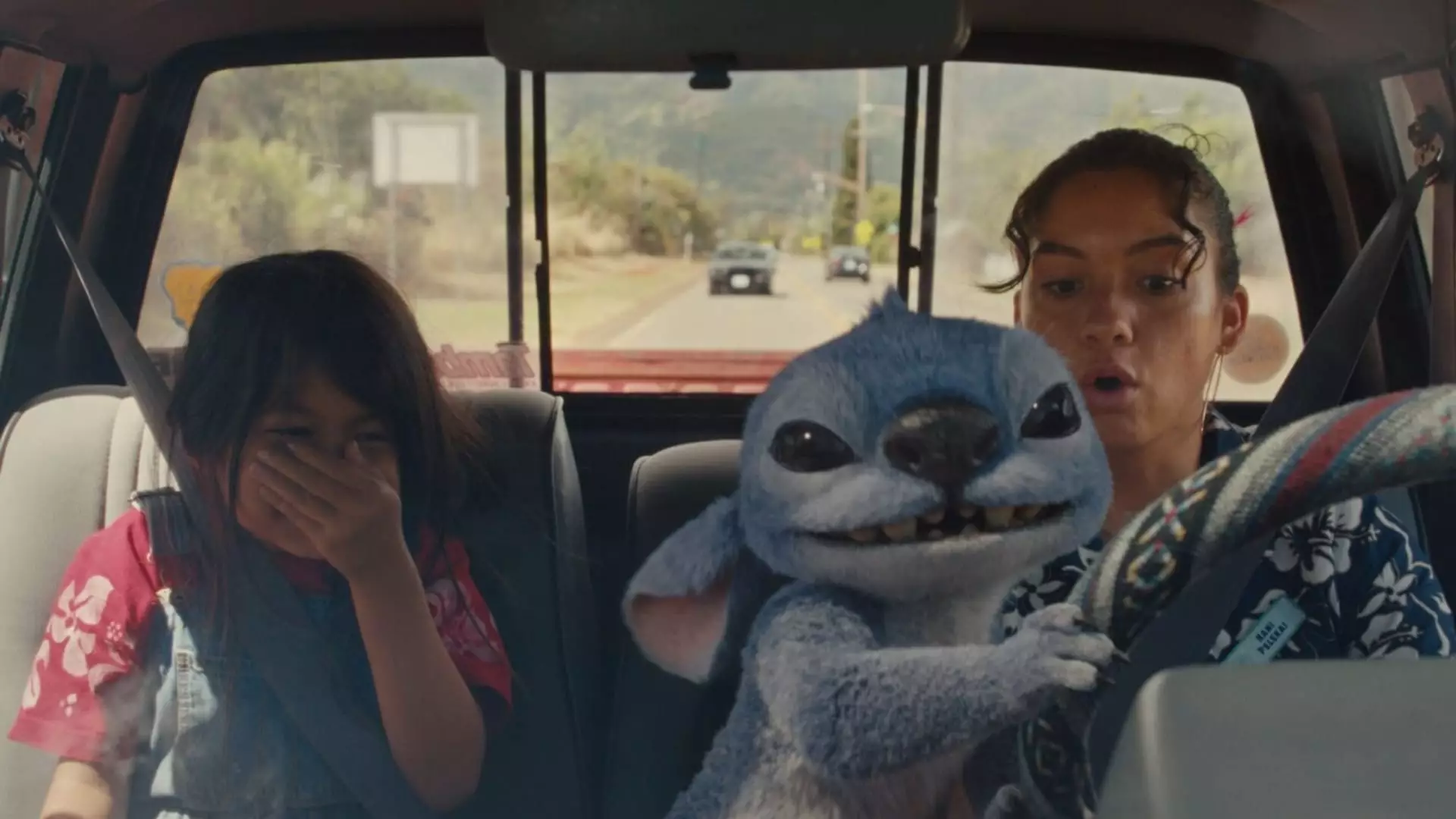In an astonishing turn of events, shares of movie theater companies soared tremendously this past Tuesday, signaling a powerful resurgence in an industry many deemed on death’s doorstep. The Memorial Day Weekend, which witnessed an unprecedented box office take of $326 million, has ignited optimism. AMC Entertainment’s stock surged beyond 20%, while Marcus Corporation and Cinemark stocks followed suit, showcasing growth ranging from 2.5% to 8%. However, the reflection on these numbers raises critical questions: Is this a genuine turnaround for cinema, or merely a fleeting peak in a much larger series of identifiable struggles?
This year’s Memorial Day exceeded double the ticket sales of 2024—a staggering growth from $132 million to $326 million. Yet this spike, albeit impressive, evokes skepticism. Does it represent a fundamental shift, or is the industry simply capitalizing on nostalgia and blockbuster dominance? The array of adventurous films—including Disney’s live-action “Lilo & Stitch” and the heart-pounding “Mission Impossible – The Final Reckoning”—tells a story of calculated strategy. While audiences may flock temporarily to the big screen, we must question whether these films can sustain long-term audiences in a world where streaming services abound.
The Power of Anticipation and Nostalgia
The wild success attributed to the eagerly awaited releases—films that invoke both nostalgia and thrilling new narratives—highlights a critical component of cinema: the storytelling. The amalgamation of diverse audience needs met through these tentpoles underlines a rekindling of moviegoing traditions. However, does just “coming together at the right time” validate the industry’s purported revival? While Shawn Robbins of Fandango celebrates the box office’s upward trajectory as a manifestation of momentum, the reality remains convoluted. Nostalgia plays a powerful role, and one must wonder, are moviegoers simply indulging nostalgia rather than exploring the robust variety of stories offered by independent filmmakers that are often overshadowed in the face of blockbusters?
Indeed, the complex relationship between moviegoing habits and the types of films being produced raises questions regarding diversity within the cinematic experience. The thrill of records being smashed mustn’t overshadow the need for innovation in storytelling. Many independent films possess intriguing narratives and unique voices yet struggle to find footing against the behemoth-like marketing of major franchises. The volatility associated with blockbuster films should also initiate discussions about the sustainability of these revenue spikes; will audiences remain loyal beyond the immediate rush?
The New Normal: Industry Stakes in a Changing Landscape
Adam Aron, CEO of AMC Entertainment, expressively signaled a turning point, a “corner turned,” capturing both hope and a fragile reality that we cannot ignore. While it’s enticing to bask in the positive data, cinema’s plight should not be trivialized. The last few years have proven turbulent—forced closures, competition from streaming giants, and evolving consumer habits have all altered how moviegoers engage with films. Even with ambitious summer projections hinting at a blockbuster season exceeding $4 billion, it’s perilous to assume success is now a given for the traditional cinema experience.
Interestingly, CFO Chad Paris of Marcus Corporation asserts that this weekend marked a turning point, crediting a “fulsome amount” of product motion. But isn’t it alarming that the industry heavily relies on just a handful of franchises to resuscitate box office numbers? To return to the proposition: is our current cinematic zeitgeist simply propelling us closer to another crisis as we neglect the necessity of nurturing varied narratives?
What Lies Ahead: A Carefully Curated Future for Cinema?
As we bask in the glow of recent box office victories, it’s essential to recognize the need for balance within the cinematic ecosystem. The industry must leverage this optimistic moment to push for a journey back toward creativity and diverse storytelling. Amidst the clamor of blockbuster success, there’s room for a renaissance for unique voices—those undervalued narratives that enrich our cultural landscape.
The dazzling triumphs at the box office underscore the significance of adaptiveness in motion picture storytelling; the future must not only focus on transactional success but also cultivate emerging filmmakers and innovative thought. Moving forward, it will be critical to engage audiences with a spectrum of offerings that honor both nostalgia and fresh narratives. The hugs of triumph following a successful Memorial Day Weekend must inspire a profound commitment to both the business side of cinema and its artistic integrity, fostering an inclusive cinematic community that reaches beyond mainstream success.

